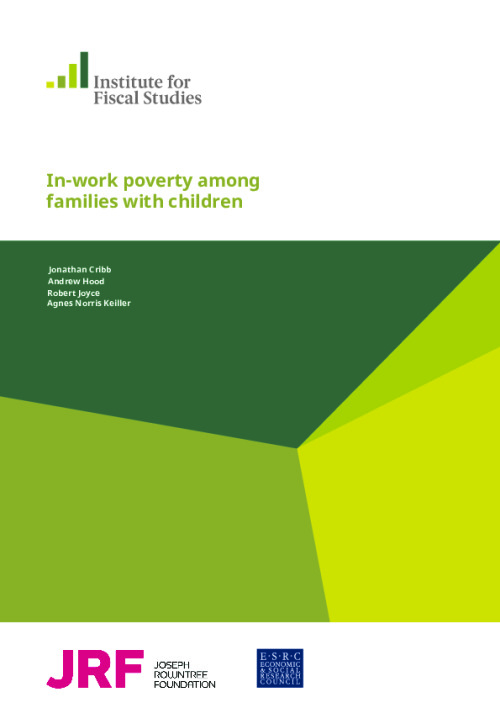This paper forms a small part of the wider and flagship annual publication “Living Standards, Poverty and Inequality in the UK. This publication will be launched in full on Wednesday 19 July 2017.
The majority of children in poverty are in working families. One reason for this is that worklessness in families with children, while an important cause of poverty, has fallen significantly over the last 20 years. In addition, the relative poverty rates for children living in working families have risen over that period. As a result, the risk of poverty is more similar for children in working and non-working households now than it was 20 years ago. Earnings are still well below their levels seen prior to the 2008 recession, increasing the risk that simply having someone in work is not enough to take families out of poverty.
The aim of this chapter is to investigate further how the living standards and poverty rates of working families with children have changed and what has driven these changes. In order to do this, we examine the relationship being parents’ economic activity, their earnings and their living standards. Throughout this chapter, we focus on Great Britain, as data on Northern Ireland are only available from 2002–03 onwards.
Key findings
- One-third of children living in poverty in 2015 were the children of one-earner couples. 43% of children of one-earner couples live in relative (AHC) poverty in 2015. This compares with 24% among all children in working families, 33% for children of working lone parents and 11% for children of two-earner couples.
- Median family earnings (before tax) in one-earner couples with children are 11% lower in real terms than 20 years ago. It is only due to increases in benefits and tax credits that the incomes of these families are any higher than 20 years ago; and since 2002–03 their incomes have not grown at all.
- This is a consequence of a broader trend: the extremely poor growth in male earnings over an extended period. 85% of one-earner couples with children are reliant on male earnings. Median weekly earnings among men with dependent children have risen by only 0.3% per year since 1994 (compared with 2.2% for working mothers); and the earnings of working fathers in a one-earner couple have done even worse than other fathers’.
- Raising living standards and reducing poverty rates among one-earner couples with children could prove challenging. The vast majority of the working parents in these families already work full-time. The non-working partners often look a long way from the labour market: only 12% are actively seeking work, and a third have been out of paid work for at least five years. And increasing the generosity of benefits in a way that was targeted at one-earner couples would be likely to weaken the financial incentives for the second adult to find paid work.











